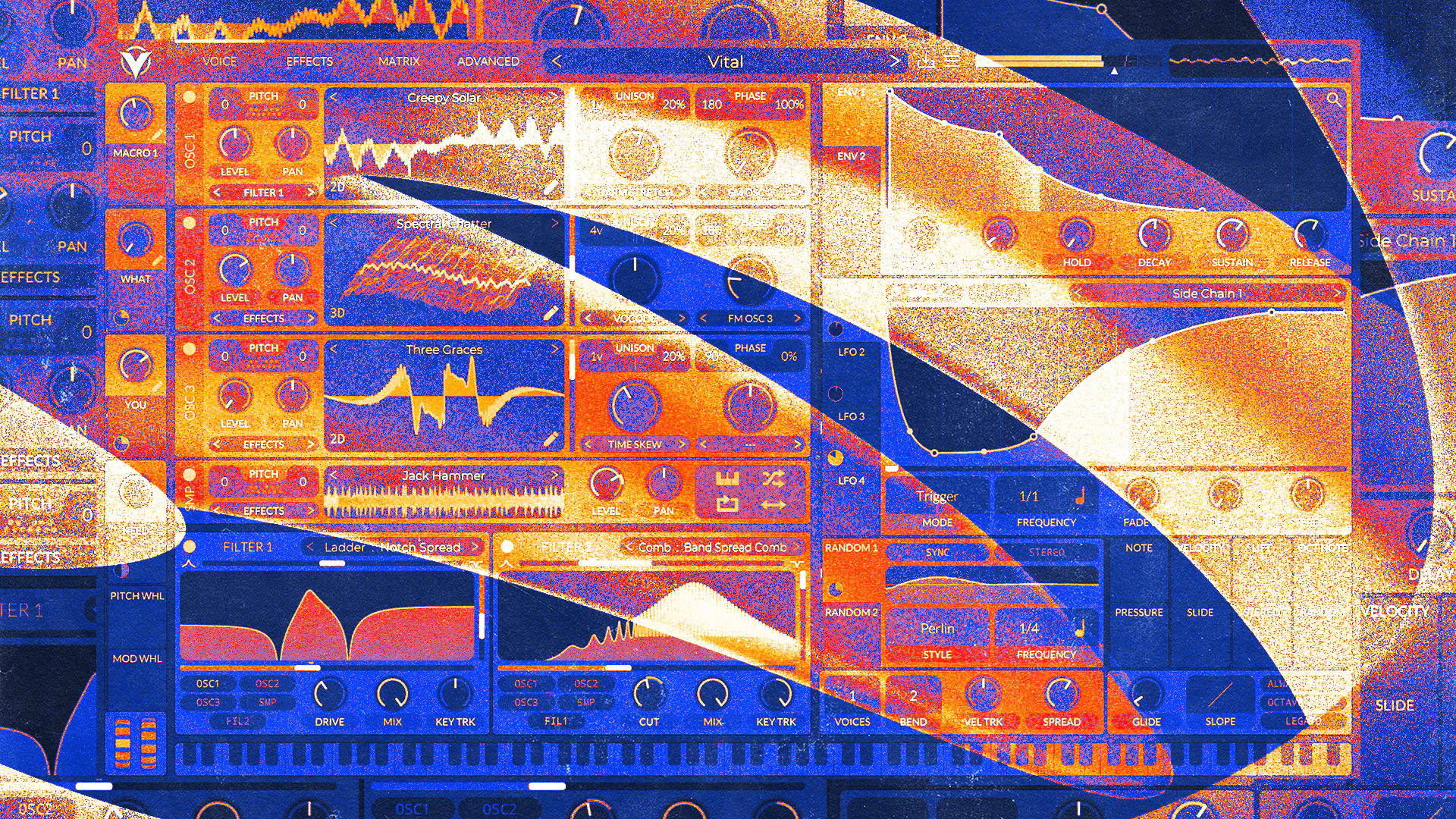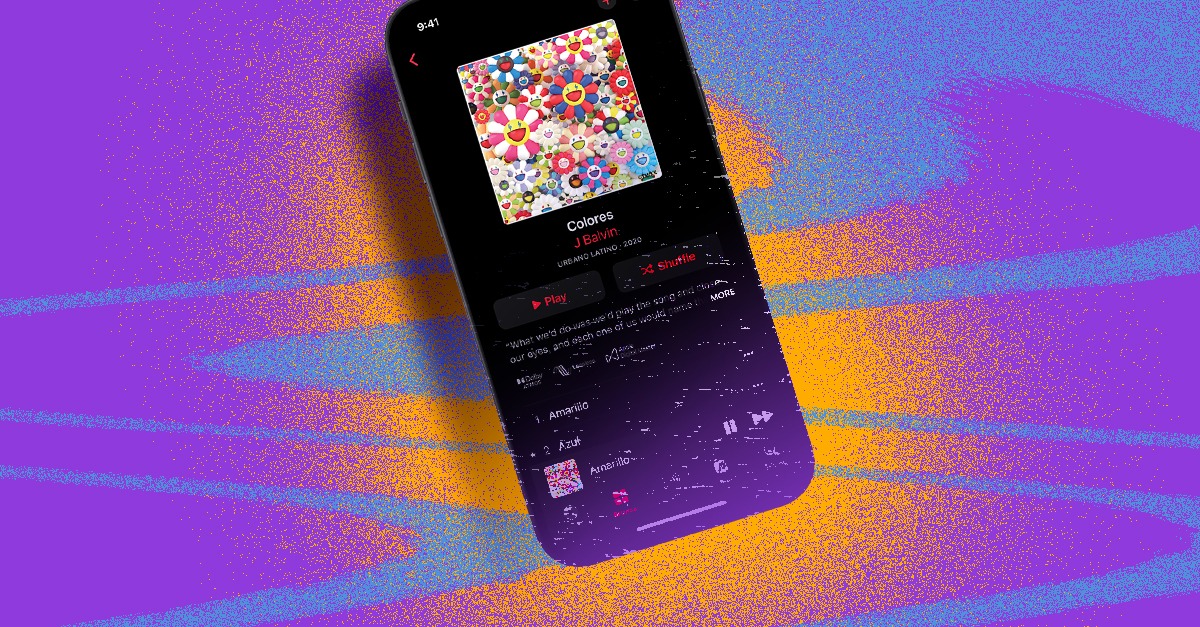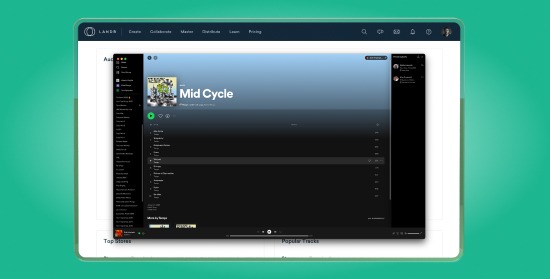
Lossless Audio: What It Is and How to Listen To It

For most of today’s listeners, music lives on streaming platforms.
The enormous libraries, intelligent algorithms and low monthly prices make Spotify, Apple Music and others the best way to listen in 2021.
But fans of hi-fi audio have been critical of the low resolution audio file type offered on streaming since the beginning.
In fact, when Tidal launched in 2014, it was a direct challenge to the idea that streaming audio had to be a compromise.
But now lossless streaming is catching on across the industry with the introduction of lossless audio in Apple Music and rumours of a similar feature coming to Spotify.
So what is lossless audio anyway? Why is it such a big deal and how can you actually listen to it?
In this article I’ll break down everything you need to know.
What is lossless streaming? What is lossless audio?
Lossless streaming is a premium option on certain platforms that allows you to listen to high resolution audio files.
High resolution lossless audio means the music file that streams from the platform’s library has a high sample rate and bit depth and hasn’t lost any audio information to lossy compression methods.
If that sounds complicated you can head over to our audio file formats guide to brush up, but here’s the basics:
Lossy compression methods like MP3 or AAC reduce the size of the file by throwing away some data that doesn’t make a big impact overall.
Lossy compression methods like MP3 or AAC reduce the size of the file by throwing away some data that doesn’t make a big impact overall.
It works well for situations where storage space is limited, but some listeners insist the lost information has a negative effect on sound quality.
Similarly, modern digital recording methods go beyond the 80s-era CD standard of 16 bit, 44.1 kHz sample rate audio.
Today’s producers generally use files at 24 bit / 48 kHz or higher for their raw materials.
That means that in theory, lossless high resolution lets you listen to music just the way the artist intended. It’s almost as if you had a direct download of the final mastered audio!
As a result, lossless hi-res audio is a lot larger than standard compressed files for streaming, so expect to use more bandwidth to listen to it.
Even so, there are data compression methods that keep 100% of the information included in the original while also reducing the size.
That keeps the overall file size reasonably practical for streaming over a wifi connection.
Is lossless audio worth it?
Lossless is a premium feature that requires extra steps to hear properly. With that and the additional bandwidth needed to stream it, you might be wondering if it’s worth it.
Unfortunately, there’s no consensus on whether or not high resolution audio sounds better.
The debate rages on in audiophile communities, but blind tests support the idea that many listeners have difficulty telling the difference.
Even so, if you mix music and you have a great pair of headphones or studio monitor speakers, you might find lossless files sound better to you. And that’s what matters!
The subjective difference might not be huge. But it’s true that lossless files files offer a much higher density of information. That in itself might be enough to convince you it’s worth it.
In the end, you’ll have to listen critically and decide if high resolution audio is important to you.
In the end, you’ll have to listen critically and decide if high res audio is important to you.
What do I need to stream lossless audio?
Lossless music comes in a different audio file type than regular streaming audio.
For starters, the sample rate and bit depth are much higher than that of a CD.
Depending on the speed of your connection and the capabilities of your listening system, you may be able to listen at sample rates of up to 192 kHz.
To experience the best results at these settings, you’ll need a digital-to-analog converter that’s capable of handling higher sample rates.
Often the built-in sound outputs of consumer gear like laptops or phones can only go so far.
Luckily for music producers, a good quality audio interface can generally handle sample rates up to 96 kHz.
That said, If you’re looking for the best possible audiophile experience you might have to invest in a set of high-end converters or a hi-fi DAC to get there.
On top of that, lossless compression does reduce file sizes for transmission, but you’ll need a high speed connection to stream them.
And watch out for extra data usage if you’re streaming hi-res audio on the go. One minute of audio playback can range from 5-8 MB depending on your settings!
Hot tip: As of this writing, there’s no great way to experience lossless audio with Bluetooth enabled wireless devices like headphones or portable speakers. Stick with a wired hi-fi setup or headphones to maintain lossless audio quality.
The best lossless audio streaming services
The lossless audio scene used to be a niche market. But today there are more options to get top tier audio quality over the internet.
I’ll break down each one and what it does best.
Apple Music
Apple Music is making big waves with the announcement of lossless quality audio coming to the platform.
Apple’s commitment to quality sound in digital audio goes all the way back to the days of iTunes and the MFiT standard for digital music releases.
Apple’s commitment to quality sound in digital audio goes all the way back to the days of iTunes and the MFiT standard for digital music releases.
Between this development and the cutting edge spatial audio it offers, Apple Music is aiming for the next generation.
With the release of hi-res, Apple Music now offers two main lossless settings within the app:
- Lossless for a maximum resolution of 24-bit/48 kHz
- Hi-Res Lossless for a maximum resolution of 24-bit/192 kHz
Despite the impressive specs, the best part is that Apple Music’s hi-fi options are available to regular subscribers at no extra charge.
You’ll still need the right gear to play lossless audio. But at least you don’t have to pay more per month for the subscription.
Add in Apple Music’s excellent library, algorithm and interface and it’s a top choice for lossless streaming.
Tidal
Tidal was the original hi-fi streaming service.
The platform still offers a compelling subscription plan with high quality, lossless audio.
It features a sizeable library with hi-fi MQA tech supporting high resolution files up to 192 kHz.
But it offers another audiophile feature that purists consider important for the full lossless experience—bit perfect audio.
This means that the audio player itself doesn’t changes the audio files in the process of playing them back.
It’s slightly more expensive than some of the other options, but it’s become a favorite among streaming services in audiophile circles.
Amazon Music Unlimited
Amazon’s ever-expanding platform includes a music streaming option that began as a digital download store in 2007.
However, in 2019 Amazon debuted high-res lossless audio with Amazon Music HD at a slightly higher monthly fee.
These days, the whole package is available at competitive pricing in the form of Amazon Music Unlimited.
You’ll get access to the majority of its large library in 16 bit 44.1 kHz lossless CD quality audio, with millions of tracks available in greater resolutions up to 24 bit 192 kHz.
Despite these perks, Amazon Music Unlimited lags slightly behind Apple Music and others in terms of user interface and music discovery.
Tidal was the original hi-fi streaming service.
Deezer
Deezer offers lossless streaming at CD quality 16 bit 44.1 kHz
While streaming quality is capped at CD quality, Deezer’s hi-fi tier offers the 360 Reality Audio immersive 3D listening format.
It’s a form of spatial audio that promises to put you deeper into the music than ever before.
Qobuz
Qobuz is a lesser known streaming service, but it has some interesting options for high quality files.
At the top subscription tier Qobuz offers downloads of high resolution music—something unique on this list to consider.
That said, Qobuz isn’t available in all territories, so you may not even have the chance to give it a try.
On top of that, you may find some gaps in its catalog in comparison to the other players.
Despite that, it claims to offer more releases in high resolution than any other streaming service, so it’s worth checking out if you’re lossless obsessed!
Lossless and flawless
Hi-res audio is here to stay in the streaming market.
Even if you’re fine with standard streaming audio quality, it’s worth trying lossless to hear for yourself.
You may find it’s a better way to listen to your favorite tracks and albums.
Gear guides, tips, tutorials, inspiration and more—delivered weekly.
Keep up with the LANDR Blog.



